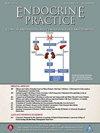自身免疫性原发性肾上腺功能不全:了解过去、现在和未来。
IF 4.6
3区 医学
Q2 ENDOCRINOLOGY & METABOLISM
引用次数: 0
摘要
简介:原发性肾上腺功能不全(PAI)或Addison病是由肾上腺发育不良或破坏引起的,导致糖皮质激素、矿物皮质激素和肾上腺雄激素的产生受损。我们对PAI的病因学、病理生理学和临床表现的理解自这种疾病最初被描述以来有了显著的发展。结果:在过去的30年里,PAI的流行病学和人口统计学发生了变化,自身免疫性PAI现在被认为是最常见的原因。这一转变受到自身免疫意识提高和免疫调节药物(如免疫检查点抑制剂)广泛使用的影响。PAI的诊断往往被延迟,可能是由于其非特异性的临床表现。这种延迟可能导致肾上腺危机的发病率和死亡率增加。虽然治疗涉及终身激素替代治疗,但优化糖皮质激素剂量仍然是一个挑战。新兴的治疗方法侧重于保留残留的肾上腺功能和预防疾病进展,为改善长期预后提供了希望。结论:本文综述了自身免疫性PAI的流行病学、病理生理学和未来护理方向的最新综述。它检查了PAI的关键病理生理和自身免疫特征,并探索了未来的方向,旨在确定可能改变这一重要内分泌疾病的诊断、治疗和结果的遗传和分子标记。本文章由计算机程序翻译,如有差异,请以英文原文为准。
Autoimmune Primary Adrenal Insufficiency: Understanding the Past, Present, and Future
Introduction
Primary adrenal insufficiency (PAI), or Addison's disease, results from adrenal gland dysgenesis or destruction, leading to impaired production of glucocorticoids, mineralocorticoids, and adrenal androgens. Our understanding of the etiology, pathophysiology, and clinical manifestations of PAI has significantly evolved since this condition was originally described.
Results
Over the past 3 decades, the epidemiology and demographics of PAI has shifted, with autoimmune PAI now recognized as the most common cause. This shift has been influenced by increasing awareness of autoimmunity and the widespread use of immune modulating medications, such as immune checkpoint inhibitors. The diagnosis of PAI is often delayed, likely due to its nonspecific clinical presentation. This delay may result in increased morbidity and mortality from adrenal crisis. While treatment involves lifelong hormone replacement therapy, optimizing glucocorticoid dosing remains a challenge. Emerging therapeutic approaches focus on preserving residual adrenal function and preventing disease progression, offering hope for improved long-term outcomes.
Conclusion
This review provides an updated overview of the epidemiology, pathophysiology, and future directions in the care of autoimmune PAI. It examines key pathophysiologic and autoimmune features of PAI and explores future directions aimed at identifying genetic and molecular markers that may change the diagnosis, treatment, and outcome of this important endocrinopathy.
求助全文
通过发布文献求助,成功后即可免费获取论文全文。
去求助
来源期刊

Endocrine Practice
ENDOCRINOLOGY & METABOLISM-
CiteScore
7.60
自引率
2.40%
发文量
546
审稿时长
41 days
期刊介绍:
Endocrine Practice (ISSN: 1530-891X), a peer-reviewed journal published twelve times a year, is the official journal of the American Association of Clinical Endocrinologists (AACE). The primary mission of Endocrine Practice is to enhance the health care of patients with endocrine diseases through continuing education of practicing endocrinologists.
 求助内容:
求助内容: 应助结果提醒方式:
应助结果提醒方式:


